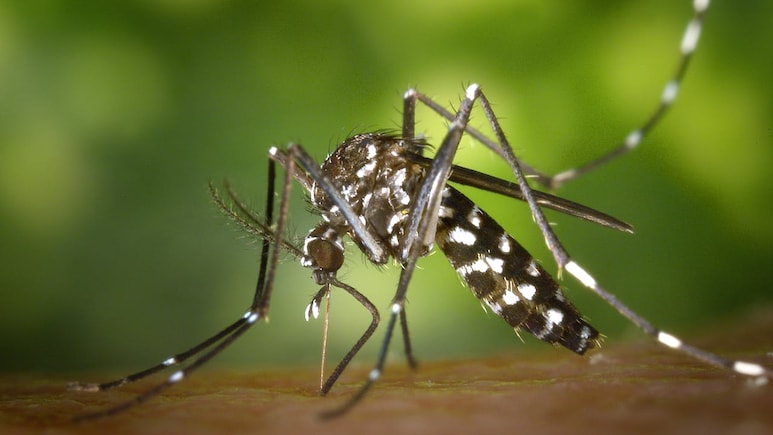
Vector-borne diseases such as dengue and malaria are classically associated with the rainy season in India, when standing water provides breeding grounds for mosquitoes. Yet public health officials in Delhi NCR routinely record cases well after the monsoon ends, sometimes into November and December, prompting questions about seasonality and risk in cooler months. Recent local surveillance and media reports from Delhi, Noida and Greater Noida document hundreds of dengue and several hundred malaria infections during the post-monsoon period in 2025, with spot outbreaks prompting intensified anti-larval drives and fogging. Understanding why cases can persist into winter, and when they decline, is essential for targeted prevention.
In short, while peak transmission is post-monsoon, residual breeding, urban microclimates, stalled vector control activities and human behaviour can sustain transmission into the cooler months.
Delhi NCR Case Reports: Dengue And Malaria Cases Lower Than Last Year
Official surveillance and recent alerts indicate that vector-borne disease transmission in Delhi NCR remains dynamic.
- The National Vector Borne Disease Control Programme (NVBDCP) and the Integrated Disease Surveillance Programme (IDSP) publish district-level case counts; NVBDCP's annual reports and IDSP alerts confirm that dengue and malaria continue to be reported outside the core monsoon months in many urban districts.
- Local public-health reporting in late 2025 showed Delhi recording several hundred dengue cases and a few hundred malaria cases through October-November, and Noida-Greater Noida reporting similar clusters that prompted intensified fogging and anti-larval operations. Municipal alerts and press briefings documented house inspections and fines for breeding sites.
- The NCDC's Delhi technical documents note that with climate variability transmission windows are expanding; some modelling suggests Delhi could see 10-12 months of potential malaria transmission as temperatures and rainfall patterns shift.
These numbers do not mean year-round surges everywhere. Rather, they reflect localized pockets where breeding conditions persist or control measures lapse.
Why Cases Can Persist Or Rise In Cooler Months
Residual Breeding Sites in Urban Areas
Aedes aegypti (dengue) breeds in small, artificial containers (pots, tyres, rooftop tanks) that can hold water long after rains stop. If municipal or household clean-ups are incomplete, breeding continues. NVBDCP emphasises source reduction as cornerstone control.
Microclimates and Warm Pockets
Urban heat islands, warm pockets caused by concrete and human activity, can keep local temperatures suitable for mosquito survival and viral replication even when ambient temperatures drop. NCDC notes climate change and urbanisation are shifting transmission windows.
Interrupted or Incomplete Vector Control
Delays in anti-larval surveys, strikes by field staff, or resource gaps reduce coverage. Recent municipal reports from NCR flagged gaps during strikes and acknowledged lapses in breeding checks, correlating with localized rises.
Imported and Residual Malaria
Malaria in cities often includes imported cases from endemic areas. If an infected person is present where Anopheles mosquitoes are active, local transmission can follow. NVBDCP annual data show heterogeneity across districts.
Human Behaviour
Continued outdoor water storage, poor waste disposal, and complacency after monsoon make breeding control difficult. Post-monsoon neglect of emptying containers sustains Aedes populations.
Prevention: What Individuals And Authorities Should Do
For households and communities
- Eliminate standing water weekly: Drain flower pots, clean overhead tanks, dispose of containers and clear blocked drains. NVBDCP guidance highlights source reduction as most effective.
- Use personal protection: Wear long sleeves at dawn/dusk (Anopheles) and during daytime (Aedes), apply EPA-recommended repellents (follow label), use window screens and bed nets where needed. WHO guidance supports a mix of personal and community measures.
- Early care-seeking: Fever with body aches, severe headache, bleeding or breathlessness requires immediate medical attention, early detection reduces complications for both malaria and dengue. NVBDCP and MoHFW materials stress prompt testing.
For local authorities and employers
- Sustain anti-larval campaigns beyond monsoon: Targeted spot spraying, regular inspections and enforcement of anti-breeding rules should continue until sustained low vector indices are documented. Municipal drive reports in NCR underline the impact of aggressive post-monsoon action.
- Strengthen surveillance and rapid response: IDSP alerts and NVBDCP protocols recommend prompt case reporting, focal investigation and reactive vector control to prevent spread.
- Public communication and community engagement: Mobilisation of resident welfare associations, schools and workplaces for cleanup drives increases coverage and sustainability.
Dengue and malaria remain seasonal diseases in India, peaking after monsoon. But Delhi NCR experience shows that cases can and do persist into late autumn and early winter where breeding sites, urban microclimates, surveillance gaps or imported infections exist. The key lesson is simple: Seasonal risk does not end with the rains. Continued source reduction, robust surveillance and early clinical testing are the most practical defences. For residents and municipal bodies alike, sustained vigilance in the post-monsoon months can prevent pockets of transmission from becoming larger outbreaks.
Disclaimer: This content including advice provides generic information only. It is in no way a substitute for a qualified medical opinion. Always consult a specialist or your own doctor for more information. NDTV does not claim responsibility for this information.
Track Latest News Live on NDTV.com and get news updates from India and around the world

